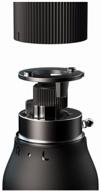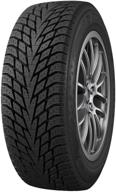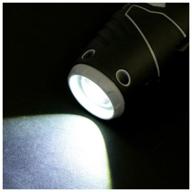
Review on Revamp Your Cleaning Routine with OTC 6043 Blast-Vac Multipurpose Cleaning Gun by Zach Peterson

This helped clean the core of a 2003 VW Passat heater. The quality of the instrument is not very good.
This tool saved me a lot of money and time. I used it at 50psi for an hour on just a heater core to free it. I connected a tool to the heater core outlet to force water out of the inlet because I've read that it's easier to flush the heater core by reversing the flow direction. I gave the tool 3 stars because of the quality of the tool, but if I had to do it again I would definitely do it. The following review is way too long, but it addresses the issues I had and why I did it the way I did. If you don't have time for all of this, just watch the video I've attached. Like other reviewers, the tool I received looks exactly like the Model 70801A Coolant Flush Gun Private Brand Tools. No brass. Everything is OTC marked and the manual and box are professionally printed. The photos in the instructions match what I received. The instructions say there is a nozzle for vacuum mode, but it is not included. My guess is that OTC and PBT are the same company or one of them makes for the other. You will need a 1/4" NPT air fitting. Hose to a 4.5 gallon Husky air compressor rated at 4 cfm at 40psi, but I'm not sure if that's necessary. The manual says, that the pressure should not exceed 100psi.I tested the tool at 80psi, not hooked up to water or a car just to see how it works.Rarely did the gun randomly fire back at full throttle when refilling the compressor tank, even when the trigger wasn't pulled. When this happened the trigger couldn't stop him. I would have to disconnect and then reconnect at a lower pressure like 60 and then pull the trigger momentarily. If the pressure was too low (e.g. 20), it also turned on randomly, but not at full power. At an average pressure of 30-60, it leaked quite a bit, almost inaudibly. I think there's a diaphragm or something there that's not very well done. Also in the area There is a leak in the air plug threads. Not the thread itself, but where the female threaded piece of plastic that you screw the 1/4" NPT male into meets the tool. I gently twist back and forth a little until it stops "Full turn doesn't matter. This is a recurring problem. As another reviewer pointed out, the threads on the quick release are too tight. When I connected the water, it ran through the threads at first. I had to use two pairs of pliers to get it out little by little tighten until it stopped leaking. It took a lot of torque and was afraid I would break the plastic or warp the garden hose threads. Luckily the quick connector never came loose as other reviewers have warned, but I didn't used a lot of water pressure really. Other reviewers advice to buy a brass quick connect is the best. The water switch on the tool also leaked when I fully open it s switched, but there was a small leak. I drained some coolant from the car and then disconnected the heater core hose. This can be done with a hose removal tool that looks like a barbed metal hook. I had to make a notch between the hose and nipple to loosen the connection because after a while they kind of stick together. I connected a 3/4" ID hose from the tool outlet to the outlet of my clogged heater core (NOT the inlet, I read somewhere to reverse the flow in the core) and the outlet hose from the core inlet to the bucket. As I already knew, that the problem is related to the heater core, I felt it was better to attack it directly instead of flushing the entire system, which might not have been as effective and also seemed quite complicated as the manual says you have to do this to remove the Thermostats. Instrument with short pulses. I used the minimum water pressure but I don't know how much. You can see in the video that the core fills up with water in a few seconds after each pulse. I chose air at 50psi, based on my dry testing of the tool to see how it delivers the best shocks with the least amount of air leak. I have successful reports of the Passat at 60psi but I've also read that it's too much psi, and use normal 20psi coolant pressure. Who is right, I do not know. , These were actually 40-50 explosions that went through the core. The exhaust air hose was kinked by pressure surges so that it had to be held in a bucket. Not in the video: I did some faster bursts towards the end where instead of waiting for water to refill the core after each burst, I waited for some water to flow into the hose that leads into the core. There was some coolant in the first bucket. So I bottled it to recycle as a coolant. Every bucket after that was clean water flowing down the drain. After a few buckets I switched to a large tub and then put a bucket in and took out some water to drain. The hoses I used were clear and I have never seen clear water come out of them. At the end, when I was done and drained the remaining water in the tub, I wiped what looked like sand on the bottom. Like half a handful of beach sand, but that wasn't beach sand, it was from the radiator. I had no idea what came out until I was done because it all sank to the bottom. I poured some distilled water into the heater core to remove water from the faucet, then refilled and bled the cooling system. I used a laser thermometer pointed into my car's air vents and now they read 160 degrees after the car has warmed up. I went from no heat to full heat. Hope it lasts through the winter.
- Impressive
- Boring packaging
New products
Comments (0)
Top products in ❄️ Air Conditioning Tools & Equipment

🔍 UView 560000 Combustion Leak Tester: A Reliable Tool for Efficient Diagnosis

9 Review
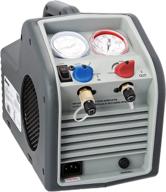
Robust Robinair (RG3) Portable Refrigerant Recovery Machine, 115V, 60Hz -Efficiently Recovers Liquid and Vapor Refrigerant

9 Review

💪 Enhanced Universal R134A Valve Core Remover/Installer by Mastercool (81290)

9 Review
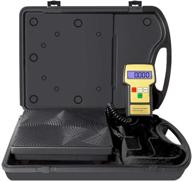
VIVOHOME 220LB HVAC Electronic Digital Refrigerant Charging Weight Scale – High Precision with Protective Case

9 Review



